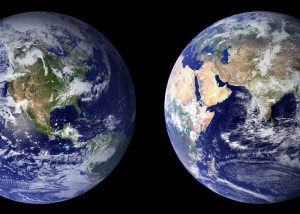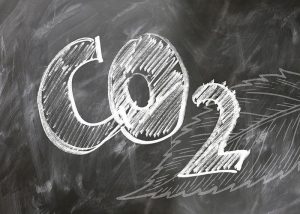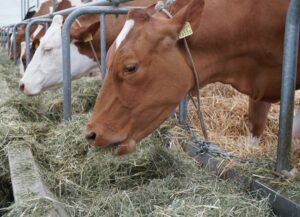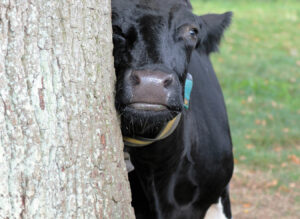Fernando Díaz
Milk production is often wrongly considered to be a major source of the greenhouse gases (mainly methane) affecting climate change. Researchers from Switzerland evaluated whether increasing the productive life of cows reduces greenhouse gas emissions as it reduces emissions from the rearing of replacement heifers. Moreover, the investigators determined the change in profitability of cows with increasing their productive life.
The experiment included 30 Brown Swiss cows under two feeding regimens. Half of the cows received a diet either with a limited amount (4.5 kg/cow/day) or without concentrate for their entire productive life. The diets consisted of hay, corn silage and artificially dried grass pellets plus two types of concentrate for the concentrate-fed cows.
Cows ranged from 2 to10 years old with a productive life (days from the first calving until the time of the experiment) from 48 to 2608 days. Emission of the greenhouse gases was measured by using a life cycle analysis which covers environmental impacts that occur either directly on-farm or result from off-farm activities along the supply chain of inputs used for farming activities. Lifetime greenhouse gas emissions comprise the sum of emissions from the heifer rearing phase, feed production and enteric methane.
The results of this study were published in Animal. The researchers (Grandl et al., 2019) found:
- While total heifer rearing greenhouse gas emissions were fixed at 5181 kg CO2-eq. per cow, cumulative lifetime enteric methane and feed production emissions increase linearly with age, ranging from 615 to 30,886 and from 761 to 39,416 kg CO2-eq., respectively, in cows from 48 to 2608 days of productive life.
- Greenhouse gas emission intensity, expressed as lifetime emissions per lifetime FPCM (fat and protein corrected milk) production, was negatively related to the length of productive life. The main effect of age on emission intensity was the decrease in the fixed emissions from heifer rearing.
- The contribution of replacement costs decreased continuously from 38% to 9% for cows when productive life increased from 1 to 7 years. Thus, profit per kg of FPCM produced was positively related to productive life.
In conclusion, increasing cow productive life is a viable and profitable strategy for reducing greenhouse gas emissions in dairy production systems.
References
Grandl, F., M. Furger, M. Kreuzer, and M. Zehetmeier. 2019. Impact of longevity on greenhouse gas emissions and profitability of individual dairy cows analysed with different system boundaries. Animal: 198–208.








